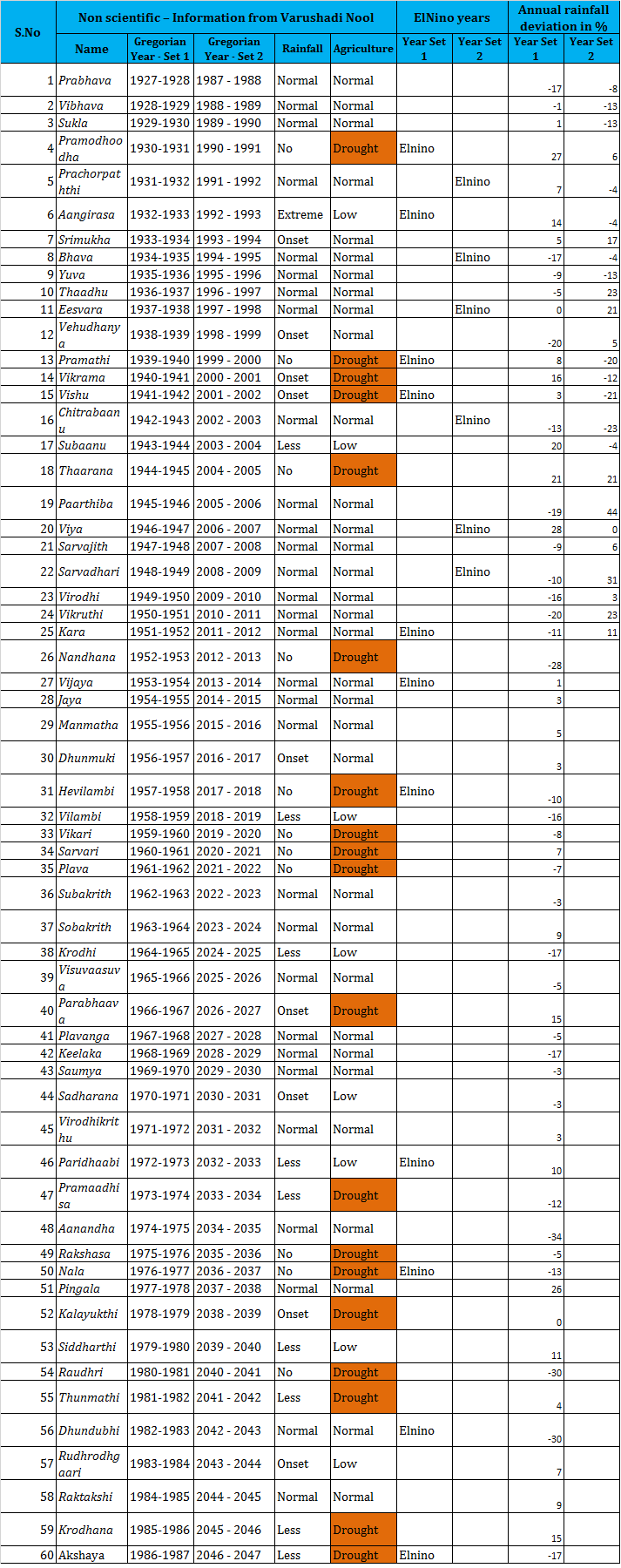Advanced climate modeling and forecasting techniques are in place for the past two decades. However for many decades, the farmers in rural Tamil Nadu were using traditional climate forecasting ways to understand the climate characteristics well in advance through sky observations and a book called “varushaadi Nool” (varushadi – year, Nool – Book) written by ancient saints. The varushaadi nool has details on rainfall and agricultural yield for 60 years cycle (see table below). Farmers read the book (Varushaadi Nool) on April 14, which is the starting of tamil new year to know about the rainfall characteristics and agriculture yield for the upcoming crop season.
Some farmers, Observe the cloud pattern during the full moon day of Chitirai month (14Apr to 13May) to predict the seasonal rainfall and it became accurate for most of the times. The cloud pattern on full moon day of Chitirai month (14Apr to 13May) and varushaadi nool helps them to understand the rainfall characteristics and crop yield well ahead of time to be prepared mentally for the uncertain situations.
The translation of the songs in varushaadi nool for 60 years are presented in the below table. Just to validate, how our traditional knowledge worked in the past. I have added El Nino years and rainfall deviation (for Tamil Nadu) in the table. From 1926 to 1986, most of the Elnino years were matching with “Varushadi Nool” drought years. Some of the drought years were matching with varushadi nool. But at the same time it fails to predict from 1987. This might be an indication of the change in climate pattern which was not foreseen by the ancient saints or I do not know. However it has to be further investigated to have some interesting results. This nonscientific method of climate forecast somehow fits with scientific observations too.
Table: Rainfall and Agriculture characteristics from Varushadi Nool

